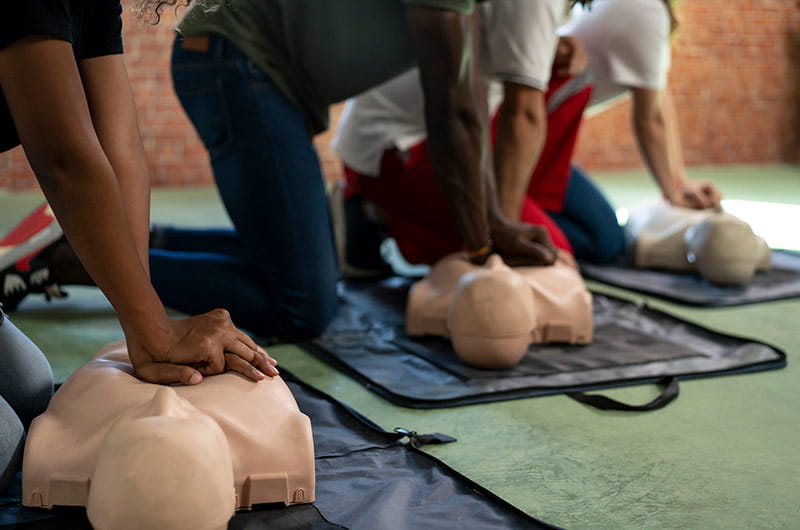Learn CPR and be prepared to save a life anywhere

A cardiac emergency can strike anyone, anywhere, and CPR can double or triple chances of survival. That’s why it’s important that people learn what to do in case of a cardiac emergency:
- Call 911.
- Deliver high-quality CPR.
- Get and use an AED as soon as possible.
Knowing these steps — and knowing how to perform CPR on infants, children and adults — can save lives.
The American Heart Association aims to double the survival of cardiac arrest by 2030. With your help, we can turn bystanders into lifesavers so that in case of a cardiac emergency, anyone is prepared and empowered to provide CPR and become a vital link in the chain of survival.
Every year in the U.S., more than 350,000 cardiac arrests happen outside of hospitals, with almost 90% of those cases ending in death. Most of those emergencies happen in the home, making it essential that parents, especially, learn CPR techniques for all ages.
In fact, more than 23,000 children experience cardiac arrest outside of a hospital each year. Nearly 20% of those cases are infants, and cardiac arrest accounts for 10%-15% of sudden unexpected infant deaths in the U.S.
This February, American Heart Month, is an ideal time to commit to learning the lifesaving techniques of CPR. Infants, children and adults all have differing requirements for lifesaving techniques. The main difference between adult CPR and infant CPR lies in the pressure of the chest compressions and the positioning of the hands. Hands-Only CPR can be effective for teens or adults, but the AHA still recommends CPR with compressions and rescue breaths for infants, children, victims of drowning or drug overdose, or people who collapse due to breathing problems.
Hands-Only CPR has been shown to be as effective in the first few minutes as conventional CPR for cardiac arrest at home, at work or in public. It has just two steps, performed in this order:
- Call 911.
- Push hard and fast in the center of the chest at a rate of 100 to 120 compressions per minute.
Research shows that people are more likely to remember the correct pace when trained to the beat of a familiar song. Some song examples include “Stayin’ Alive” by the Bee Gees, “Crazy in Love” by Beyonce featuring Jay-Z, “Hips Don’t Lie” by Shakira” or “Walk the Line” by Johnny Cash. You can find more songs on the ”Don’t Drop the Beat” playlist.
About 41% of people who experience cardiac arrest outside of a hospital receive CPR while waiting for emergency personnel to arrive. Even then, some groups are less likely to receive CPR from bystanders. For example, women are less likely than men to receive CPR. In addition, people with lower socioeconomic status and from minority backgrounds are less likely to receive high-quality rescue techniques, such as timely bystander CPR and AED usage.
The AHA offers multiple ways to make learning these lifesaving skills easier. Here are four simple ways to get involved:
- Watch online: Learn Hands-Only CPR basics and share awareness using #NationofLifesavers.
- Learn at home: Use CPR Anytime® kits for self-paced training.
- Take a course: Organize group sessions to master CPR, first aid and AED use.
- Turn workplaces into lifesaving hubs: Commit to employee CPR training and activate workplace emergency plans.
Learn more and join the movement at heart.org/Nation.





